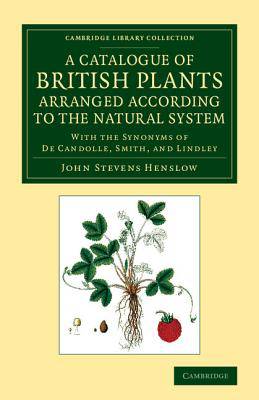
- Afhalen na 1 uur in een winkel met voorraad
- Gratis thuislevering in België vanaf € 30
- Ruim aanbod met 7 miljoen producten
- Afhalen na 1 uur in een winkel met voorraad
- Gratis thuislevering in België vanaf € 30
- Ruim aanbod met 7 miljoen producten
Zoeken
A Catalogue of British Plants Arranged According to the Natural System
With the Synonyms of de Candolle, Smith, and Lindley
John Stevens Henslow
€ 61,45
+ 122 punten
Omschrijving
In 1829, botany had much to prove. A prominent lecturer, John Lindley, noted that 'it has been very much the fashion of late years, in this country, to undervalue the importance of this science, and to consider it an amusement for ladies rather than an occupation for the serious thoughts of man'. In the three documents reissued here, Cambridge botany professor John Stevens Henslow (1796-1861) demonstrates the exacting standards of his course. The work contains an 1829 catalogue of British plants, the skeleton structure of sixteen lectures for 1833 and an 1851 list of potential examination questions. Students were expected to differentiate between 'an indefinite and a definite inflorescence', to recognise 'albuminous seeds', and describe 'nectariferous appendages'. With a strongly Linnaean approach to taxonomy, this collection offers researchers a window into the growth of academic botany prior to the revolution occasioned by Stevens' pupil, Charles Darwin.
Specificaties
Betrokkenen
- Auteur(s):
- Uitgeverij:
Inhoud
- Aantal bladzijden:
- 80
- Taal:
- Engels
- Reeks:
Eigenschappen
- Productcode (EAN):
- 9781108061728
- Verschijningsdatum:
- 26/09/2013
- Uitvoering:
- Paperback
- Formaat:
- Trade paperback (VS)
- Afmetingen:
- 140 mm x 216 mm
- Gewicht:
- 113 g

Alleen bij Standaard Boekhandel
+ 122 punten op je klantenkaart van Standaard Boekhandel
Beoordelingen
We publiceren alleen reviews die voldoen aan de voorwaarden voor reviews. Bekijk onze voorwaarden voor reviews.








